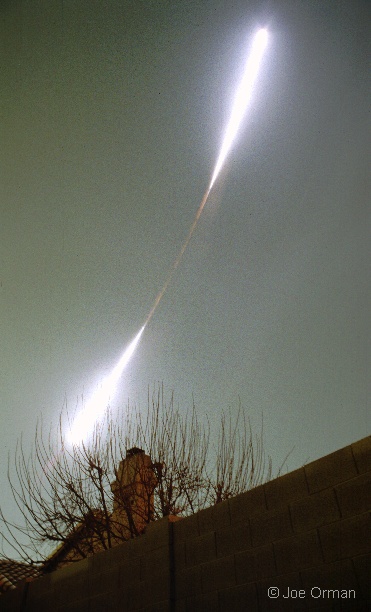
|
Credit & Copyright: Joe Orman
Explanation:
Tonight, Friday the 13th, October's big, bright, beautiful
full Moon
will be in the sky, rising as the sun sets.
A time exposure of this evening's full Moon would show a brilliant
circular arc or Moon trail tracing its celestial path.
In fact, this single,
four hour long exposure from the
evening of January 20 shows a full Moon trailing
through hazy
skies above Phoenix, Arizona, USA.
Of course, the picture also shows something you won't see
tonight -- a total
lunar eclipse.
A lunar eclipse is caused when
the full moon enters
Earth's
shadow and
as the eclipsed Moon's light grows steadily
fainter, the Moon trail becomes narrow and dim.
The total eclipse phase, when the Moon passes completely within
Earth's shadow,
occurs near the middle of this Moon
trail arc.
But even during totality, the Moon trail is visible and noticeably red.
Normally illuminated by sunlight which falls directly on
its surface, during a total
lunar eclipse the Moon is still illuminated
by sunlight filtered and refracted through Earth's atmosphere.
The refracted light lends the
eclipsed Moon a dim
and reddish appearance.
|
January February March April May June July August September October November December |
| |||||||||||||||||||||||||||||||||||||||||||||||||||||||
NASA Web Site Statements, Warnings, and Disclaimers
NASA Official: Jay Norris. Specific rights apply.
A service of: LHEA at NASA / GSFC
& Michigan Tech. U.
Based on Astronomy Picture
Of the Day
Publications with keywords: Moon - eclipse - lunar eclipse
Publications with words: Moon - eclipse - lunar eclipse
See also:
